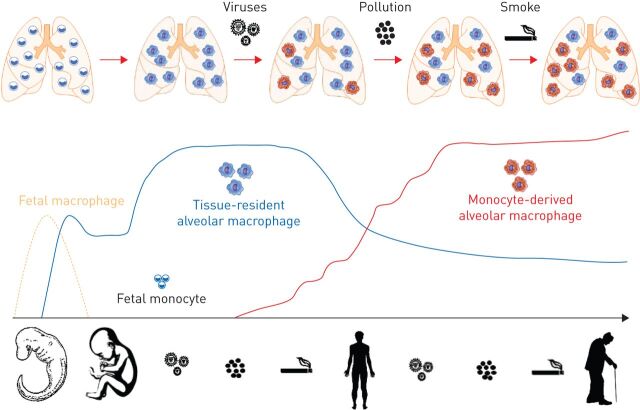FIGURE 1.
Lung macrophage development and composition through the lifespan. In the mouse, fetal monocyte cells that populate the lung during early embryogenesis differentiate into alveolar macrophages shortly after birth. This population of “tissue-resident” alveolar macrophages are long-lived and capable of self-renewal in homeostatic conditions (blue line). However, exposure to environmental challenges including viruses, air pollution and cigarette smoke over the lifespan may induce the recruitment of monocytes that differentiate into alveolar macrophages in response to cues provided by the local tissue microenvironment in the lung (red line). Over time, these monocyte-derived alveolar macrophages might persist in the lung and/or replace the tissue-resident alveolar macrophages.

